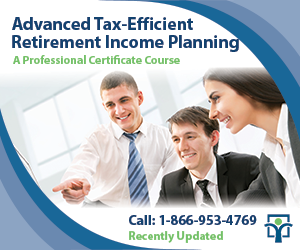Last updated: March 08 2016
Precise March 15 Instalments Lead to 5 Wealth Enhancers

It’s important that fragile investments stay intact as markets recover. For this reason, it makes absolutely no sense to overpay any personal income taxes in advance on the March 15 quarterly instalment remittance deadline. Astute tax and financial advisors will make sure their clients encroach on only the right amount of capital for these purposes, especially if they are retirees.
Note that if the balance due on your personal income tax return is $3,000 or more for the last year and one of the two previous years, you’ll be required to make instalments quarterly. You’ll get a reminder from the tax department outlining the details once your return is assessed. If you find that your balance due exceeds $3,000 this year, you should consider adjusting your withholding so that it doesn’t happen a second time.
Also, if you’re making instalments and your income decreases, be sure to adjust your instalments downward as well. Check out the Knowledge Bureau Income Tax Estimator to assist with this calculation.
 |
Your accountant uses tax software to help you choose the alternative instalment payment options. You don’t necessarily have to follow CRA’s billing method. But do know that if your alternative instalment payment schedule is deficient, you’ll be charged interest.
Under CRA’s billing method, instalment payments for March and June 2016 are based on the balance due on the 2014 return and your September and December payments will be based on your 2015 return. If your income is changing, use an estimation of the 2016 year’s income instead of CRA’s billing method.
Now, instead of loaning that money at no interest to the government with your overpayment, only to have to wait to get it back next April 2017, consider five ways to put your money to better use o increase your own net worth:
- Pay down non-deductible debt if you have it.
- Make an RRSP contribution if you are eligible.
- Make an RESP or RDSP contribution if are eligible to do so.
- Make a TFSA contribution.
- Add the money to your non-registered investment account.
Additional Educational Resources: Advanced Tax-Efficient Retirement Income Planning course; Tax Strategies for Financial Advisors, Tax Planning for Corporate Owner-Managers.





